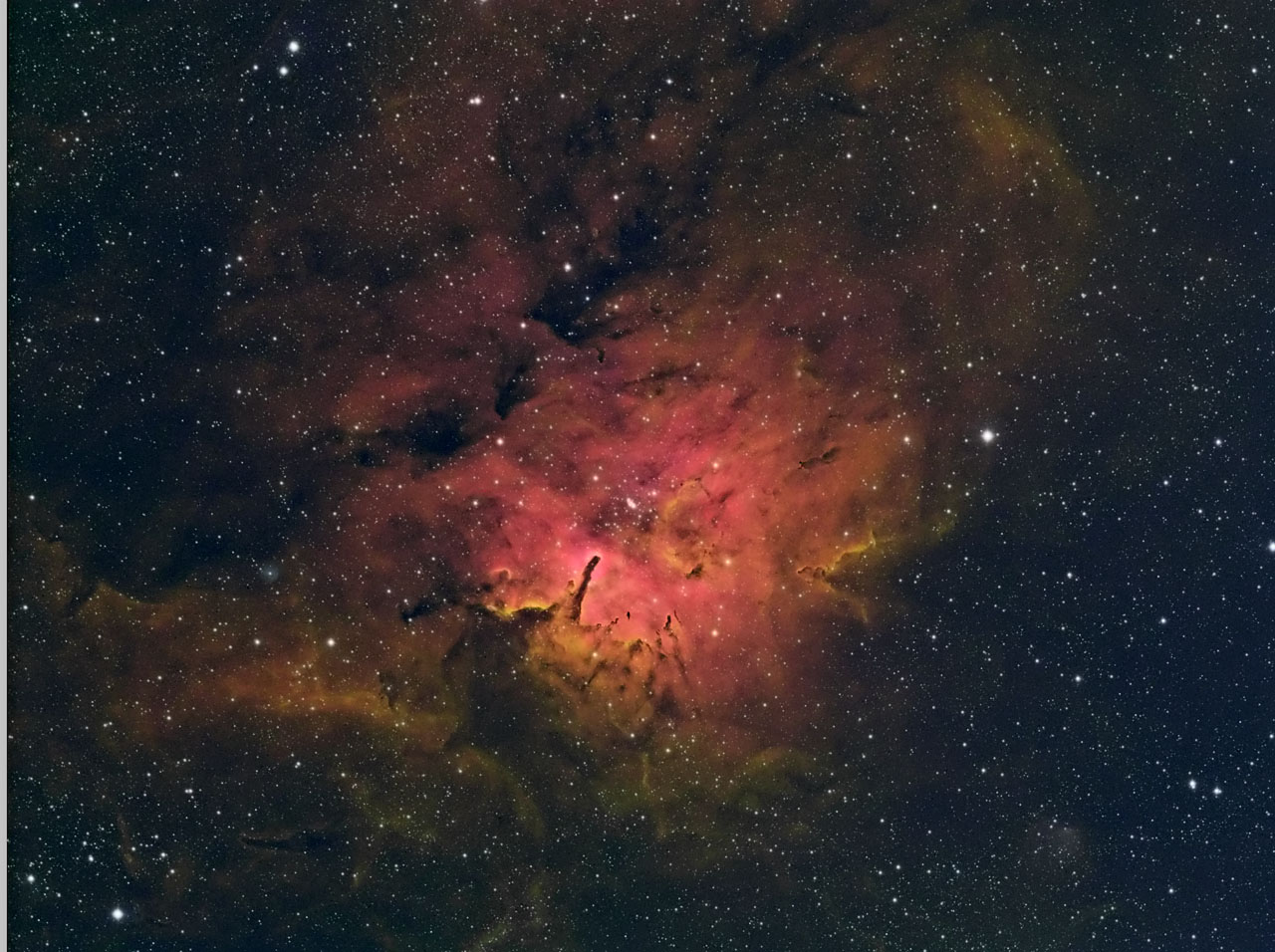I did it again. Here is another object from the Sharpless catalog, taken over the last few nights. Capturing this has, unfortunately, kept me from processing the images I took at the last star party. Not so much because I haven’t had time, but because I need to capture some calibration frames (what are called “flat frames”) before I can process them, and that means switching the camera from narrowband filters (what I use in my home observatory) to the RGB filters I used at the star party, then back again. But I will get to them eventually.
Sharpless 86 (Sh2-86) is also cataloged as NGC6820, but it is an object that had escaped my attention until I started looking through the Sharpless catalog. It is located in Vulpecula, a smallish constellation just south of Cygnus, and fairly close to M27, the Dumbbell Nebula. It seems that a lot of very interesting nebulae are ignored because a brighter and better known object is nearby.
I captured over 20 hours of exposure on this target, but had to discard much of it due to poor seeing (resulting in poor image sharpness) and “operator error” (I forgot to set the camera temperature to the proper level for most of one night). The final image consists of 5 hours of hydrogen-alpha, and 4 hours each of oxygen-3 and sulfur-2, for a total of 13 hours. I used my “workhorse” telescope, the AT111EDT, and 3nm filters in a QSI683wsg camera. All sub-exposures are 30 minutes each.
To process the image I used a trick I learned recently: After combining the 3 narrowband channels into a color image, I used a tool (one of the Photoshop “actions” in Annie’s Astro Tools) to remove the stars. This allows you to tweak the colors pretty severely without creating color halos around the stars. The stars are then re-introduced by using the original H-alpha channel as luminance. Theoretically, this also produces false color in the edges of the stars, but you don’t notice them because they blend perfectly with the color around them. This technique also eliminates all “real” color in the stars – they are all white. But that is not really a significant loss because with narrowband filters there is usually very little difference in star brightness between the channels, so little color. And the color that does sometimes appear is, like the nebulosity, “false color” – not what you would see if you looked at the star through a telescope.
Next week I am going to the Table Mountain Star Party with my friend, Dan. He and his wife have been involved with TMSP for many years and I’ve been wanting to go, but my schedule has never been cooperative. Well, there is also the long drive – over 400 miles each way. It’s very close to the Canadian border! I will be a vendor there and opening the “mobile gallery” to the other star party goers. TMSP is not quite as big an event as the Oregon Star Party, but attendance is expected to be higher this year – partly because of the upcoming eclipse. You can learn more about TMSP here: http://www.tmspa.com/
